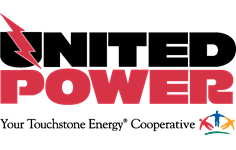The electrification of America is one of the most significant achievements of all time. More than 100 years ago, the most prominent population centers across the country were granted access to the valuable resource and quickly began to grow and prosper. Over the past century, access to electricity has expanded to include all parts of the country, especially thanks to the development of member-owned and operated rural electric cooperatives.
Today, the industry is one in the midst of an overarching transition. The retirement of coal plants, relative affordability of renewable energy and advancements in technology have primed electric utilities to power the movement toward beneficial electrification.
As we’re moving closer to an electrified future, renewable energy sources are becoming as affordable or more affordable than traditional fossil fuels. Electricity generated from renewable sources also produces zero carbon emissions and the movement toward electrified “smart” devices utilizes energy more efficiently.
Beneficial electrification, then, is electricity produced by environmentally friendly means that saves money and/or improves quality of life. This is also known as “strategic” electrification because it targets the most practical and valuable fuel switching opportunities, such as electric vehicles and lawn equipment, traditionally powered by gas engines.
Saves Money Over Time
New energy efficient technology that saves consumers money over time is being developed every day. From regularly used appliances in your home or kitchen to the construction of new homes, efficiency is key for both cost savings and environmental impact. Although there’s usually a higher initial investment, it pays for itself over time. For example, electric vehicles are priced above their gas engine equivalents, but because there are fewer moving parts and less standard maintenance, owners will realize greater savings over the life of the vehicle. That’s without considering rebates and the significant price gap between electricity and gas.
Consider heating and cooling your home, as well. Energy used for heating and cooling account for more than half the average consumer’s energy costs. A solution to reducing these costs are air source and ground source heat pumps, which are so efficient they actually provide more energy than they consume. Smart thermostats can regulate energy use whether you’re home or away, analyze your usage and make recommendations. Energy efficient lighting is brighter, lasts longer and uses just a fraction of the energy as traditional incandescent lighting.
Improves Quality of Life
We don’t often purchase devices or appliances that make our lives more difficult. Many of the same devices that provide us with energy savings also improve our quality of life, satisfying two criteria for beneficial electrification. Consider electric vehicles again. Much hesitancy surrounding EVs is related to perceived quality of life – range anxiety and access to a sufficient charging infrastructure. However, range is increasing, charging infrastructure is growing and initial cost of investment is dropping. Vehicles powered by electricity are also quiet, more capable and, depending on who you ask, more fun.
Smart meters allow the cooperative to provide members with aggregate data about their energy use in 15-minute segments using Power Portal, a free tool available to all members. This data, like other smart devices, provides a detailed review of behaviors that have the greatest impact on their energy use. Using this data, members can make small changes to realize instant energy savings.
Devices that are able to provide consumers with energy use data or learn our habits to optimize energy use in a way that fits our lifestyles ultimately means increased savings, more freedom and less anxiety about your energy bill.
Reduces Environmental Impact
The first two criteria reflect how beneficial electrification has a positive effect on consumers, but electricity has to be produced before it can be used. As more coal plants are retired, they are being replaced with renewable alternatives like wind or solar, and the technology used to capture renewable energy generated from these sources is also advancing. These advancements allow us to take greater advantage of renewable resources.
United Power has brought on more than 40 megawatts of solar energy since 2012 and has also debuted alternative renewable projects, like its methane capture project at the Erie landfill. Capturing methane produced in landfills and using it to generate electricity helps reduce its effect on climate change.
Increases Grid Resiliency
Research at Darmouth College earlier this year found electric grids with more renewables were more robust and reliable. As United Power has grown, it has added additional renewable projects to its system.
Load control methods, especially ones that shift energy use away from peak demand periods, have also shown to increase grid resiliency. United Power offers a Time of Day rate that encourages members to shift usage to off-peak periods and its Rush Hour Rewards provides incentives to let the cooperative adjust energy usage on hot days during peak periods. Upcoming cooperative programs will also utilize load control incentives to shift at-home EV charging to off-peak hours.
United Power has demonstrated its leadership in beneficial electrification through a commitment to renewable energy and energy efficiency incentives that save money and improve lives for both it and its members.

